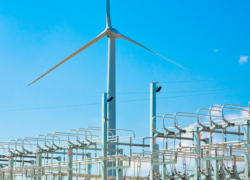Latin America Advisor
A Daily Publication of The Dialogue
Will Latin America’s Economies Perform Well in 2018?
 Brazil’s central bank, led by Ilan Goldfajn, in December forecast economic growth of 2.6 percent in 2018.
Brazil’s central bank, led by Ilan Goldfajn, in December forecast economic growth of 2.6 percent in 2018.
Over the past year, major economic developments in Latin America included the beginning of Brazil’s emergence from its worst recession ever, economic growth in Mexico despite two major earthquakes and uncertainty surrounding the future of NAFTA, and an imploding Venezuelan economy that has suffered quadruple-digit inflation and shortages of numerous basic goods, including food and medicine. What level of economic growth will Latin America and the Caribbean reach in 2018? Which countries will be the bright spots, and which will struggle? Which outside forces will most affect the region’s economies in the coming year?
Alicia Bárcena, executive secretary of the United Nations Economic Commission for Latin America and the Caribbean: "Global economic growth will remain strong in 2018 at around 3 percent, and international trade is picking up. This bolsters commodity prices, which will stay at relatively high levels. At the same time, the conditions of access to international financial markets will be relatively favorable, in spite of beginning normalization of monetary policies, as interest rates will remain relatively low, and country risks for most Latin American economies have decreased. All these elements comprise a rather favorable external scenario for Latin America and will have a positive impact on the region’s economic growth in 2018. Specifically, exports will continue to make a positive contribution to growth, as will private consumption, based on moderately growing real wages, stronger job creation and, in a number of countries, remittances. Also, for the first time since 2013, investment, specifically gross fixed capital formation, will add to economic growth. Thus, for Latin America as a whole, ECLAC projects a growth rate of 2.2 percent (after 1.3 percent in 2017), which represents a clear improvement in comparison to previous years. However, it is insufficiently vigorous in view of the needs identified by the Agenda 2030 and the Sustainable Development Goals. Central America (together with Cuba, the Dominican Republic and Haiti, +3.6 percent) and Mexico (+2.4 percent) will grow slightly stronger than South America (+2 percent). Among individual countries, Panama, the Dominican Republic and Nicaragua are projected to grow with the highest rates, of 5 percent or more."
Alfredo Coutiño, director for Latin America at Moody’s Analytics: "Latin America will head into a second year of recovery in 2018, after two years of recession. The driver of the recovery will be the positive performance of net exports due to competitive exchange rates and commodity prices, accompanied by increasing investment attracted by structural reforms. In 2018, the region will continue to benefit from the global recovery in terms of demand and commodity prices. Even though there is a good probability of continuation of NAFTA, trade between the United States and Mexico could yet be subject to some restrictions. Trade in the rest of the region will continue to advance, since Asia continues to be the main market for most South American countries. Next year’s recovery will be more balanced, with South America advancing at average rates similar to Mexico and Central America. The region will post growth around 2.2 percent in 2018, after 1.2 percent in 2017. In the south, the leading countries will be Argentina, followed by Peru, Colombia, Uruguay, Chile and Brazil. Mexico will advance further, particularly because of the expansionary effects of the political cycle and benefits of the ongoing reforms. Venezuela will be the only country in the region facing recession for a fifth consecutive year. On the economic front, a potential medium-term risk for the region could come from the global economy, either in terms of a weakening recovery that would affect demand and commodity prices, or geopolitical issues that increase risk aversion and financial turbulence. On domestic politics, even though the arrival of leftist governments is not a major threat—except to some extent in Mexico—some countries will hold elections, which could cause some turbulence: Colombia in May, Mexico in July, as well as Brazil and Venezuela in October."
Alberto Ramos, managing director and head of Latin America economic research at Goldman Sachs in New York: “Latin America’s macroeconomic backdrop strengthened gradually, but steadily, throughout 2017, and is expected to improve further in 2018. We expect the cyclical demand recovery to firm and broaden next year, supported by accommodative domestic financial conditions and strengthening confidence indicators. Inflation is forecast to moderate further, and the cross-country dispersion of inflation outcomes to narrow. Overall, we forecast real GDP growth (excluding Venezuela) to accelerate from 1.8 percent in 2017 to 2.7 percent in 2018, the highest growth rate since 2011. We forecast above-trend growth in Argentina and Brazil, the return to trend-like growth in Chile and Peru, but still subpar, below-trend growth in Colombia and Mexico. Venezuela is expected to remain trapped in a recessionary hyperinflation spiral, with real GDP forecast to decline for the fifth year in a row: we project that by year-end 2018 real GDP will have contracted by an astonishing 34 percent from 2014. Venezuela is experiencing one of the worst economic downfalls in modern Latin American history, with the contraction of real GDP exceeding that of the United States during the Great Depression. The forecast improvement in the macro outlook is far from assured. It is contingent on the implementation of disciplined investment-friendly macro policies. It is also contingent on keeping policy and political uncertainty relatively contained in a year packed with presidential and legislative elections in several of the largest regional economies. The external backdrop is expected to remain supportive, given the forecast solid above-trend global growth, firmer terms of trade (particularly for industrial metal exporters, less so for energy and agricultural exporters) and, in general, still abundant global liquidity. The main stylized external risks to our macro outlook are: 1) sharp deceleration of capital inflows (or outright portfolio outflows) triggered by faster-than-expected tightening of G3 monetary conditions, and/or renewed bouts of volatility in international financial markets that could dampen sentiment toward emerging markets; 2) downward corrections in commodity prices; 3) sharper- and bumpier-than-expected growth deceleration and/or potentially disorderly foreign exchange policy moves in China, and; 4) rising protectionism, which could hamper trade and investment flows into the region."
The Latin America Advisor features Q&A from leaders in politics, economics, and finance every business day. It is available to members of the Dialogue's Corporate Program and others by subscription.



















